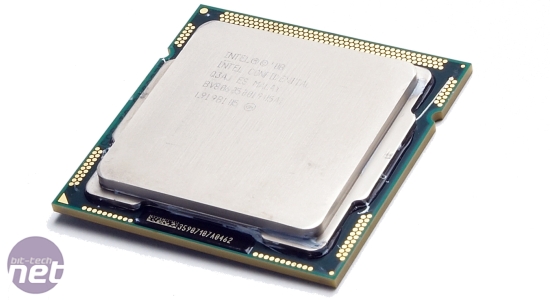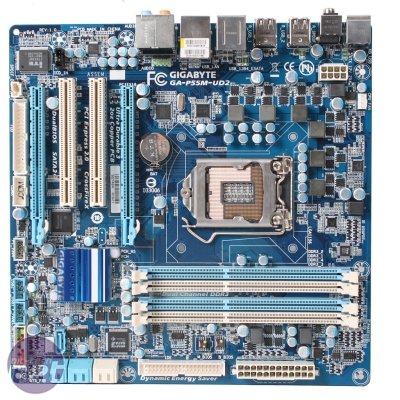PC Hardware Buyer's Guide May 2010
May 7, 2010 | 09:18

Enthusiast Overclocker May 2010
The Enthusiast Overclocker is a PC designed for those looking to build a fast PC without splashing out on pricey hardware. If you're not into speedy video encoding and heavy multi-tasking, but still love your high-resolution gaming, we've created a PC with the best balance of performance possible. However, you'll need to apply your overclocking skills to get the most from this system, but then, that's half the fun of a DIY build, isn't it?| Enthusiast Overclocker | |||
| Product | UK Price (inc VAT) | US Price (ex tax) | |
| CPU | 2.66GHz Intel Core i5-750 | £155 | $200 |
| Motherboard | Gigabyte GA-P55M-UD2 | £90 | $105 |
| Memory | 4GB 1,600MHz DDR3 | £130 | $145 |
| Graphics Card | ATI Radeon HD 5770 | £140 | $160 |
| PSU | OCZ ModXStream Pro 500W | £60 | $65 |
| CPU Cooler (UK) | Gelid Tranquillo | £26 | $40 |
| Case (UK) | Xigmatek Utgard | £65 | NA |
| Case (US) | Cooler Master CM690 II Advance | (£85) | $90 |
| Optical drive | SATA DVD-RW | £15 | $20 |
| Storage | 1TB Samsung SpinPoint F3 | £60 | $90 |
| Overall Price: | £741 | $895 | |
As we’ve got a bit more to spend on this system, we can look at some of the really powerful CPUs on the market. Our target price of less than £750 means that LGA1336 is out of the question, so we looked toward LGA1156 and Socket AM3 instead. The recent release of the AMD Phenom II X6 1090T Black Edition hasn’t shaken things up as much as we’d expected, although we haven’t tested the lower-cost Phenom X6 CPUs yet, with slower clock we can fairly safely say that they’re not worth considering for this PC.

Our confidence comes from the fact that the 3.2GHz X6 1090T BE managed an overall score of 1,367 at stock speed in our Media Benchmarks (boosted to 1,638 when overclocked to 3.87GHz). It's over £200 though; the 2.8GHz X6 1055T costs £160-165, and for less than this, there's the Intel Core i5-750. It scored 1,474 overall at stock speed and 1,953 when overclocked from 2.66GHz to 4.2GHz. We’ll stick with the i5-750 for this PC, thanks all the same AMD.
With the CPU decided on, the motherboard choice was obvious – we’re yet to find a P55 board that offers better value for money than the Gigabyte GA-P55M-UD2, which has a clean layout and is very overclockable despite costing only £90.

With our sub-£750 target price, we’ve got room for a Radeon HD 5770 graphics card. This is the first of the Radeon HD 5000-series that’s a no-brainer decision to buy, with plenty of speed for the decent price. However, the cost has risen by £10-20 to reflect the obviousness of its appeal.
The Radeon HD 5850 offers a bag-full of extra performance over this card, but costs around £235. If we wanted to include it in this sub-£750 system, we’d have to go for a lesser CPU and also skimp on the case, hard disk and CPU cooler. For our system, we’ve chosen a more balanced approach, and one that won’t see having to strip out the CPU or motherboard in a year’s time.
As previously stated, we like having 4GB of memory in our PCs, and we’ve chosen 1,600MHz DDR3 to give us a bit of headroom for overclocking the CPU. For example, if we wanted to aim for a 3.6GHz overclock, we’d use a Base Clock of 180MHz (as 180 x 20 = 3,600). If we’d opted for 1,333MHz memory, we’d have to use the 6x memory strap with this Base Clock, which would give us a memory frequency of 1,080MHz, which is a touch slow. With the 1,600MHz memory, we can safely use the 8x memory strap and have our memory run at a more healthy 1,440MHz. We wouldn’t recommend overclocking 1,333MHz memory to 1,440MHz for everyday use unless you really know your DRAM.
 As we’re planning a fairly heavy overclock, we needed to add a great cooler to the build, and we chose the Gelid Tranquillo for its cooling ability and its quietness. If you wanted to chill your CPU even lower, the slightly more expensive Titan Fenrir would serve, as it’s also very quiet when the resistor cable is used to throttle the fan.
As we’re planning a fairly heavy overclock, we needed to add a great cooler to the build, and we chose the Gelid Tranquillo for its cooling ability and its quietness. If you wanted to chill your CPU even lower, the slightly more expensive Titan Fenrir would serve, as it’s also very quiet when the resistor cable is used to throttle the fan.To aid the cooling we’ve updated our case choice from the Fractal Design R2 to the Xigmatek Utgard, which we reviewed a few weeks ago. The Utgard is cheaper than the R2, cools a PC very well, and has bonus additions such as the fan controller.
However, if you really want your PC to be very quiet, the R2 is still worth considering. Equally, and especially if you’re in the US and can’t get either of these case, the Cooler Master CM 690 II Advance is worth a look as a great yet affordable high-airflow case.
To the case, we’ve added the 500W OCZ ModXStream PSU, a cheap SATA DVD drive and a 1TB Samsung SpinPoint F3 hard disk. If you haven't got a copy already, you might want to factor in a copy of Windows 7 - if you're confident that you won't be upgrading much, then an OEM copy should be fine, but serial upgraders need the pricier retail version.

MSI MPG Velox 100R Chassis Review
October 14 2021 | 15:04








Want to comment? Please log in.